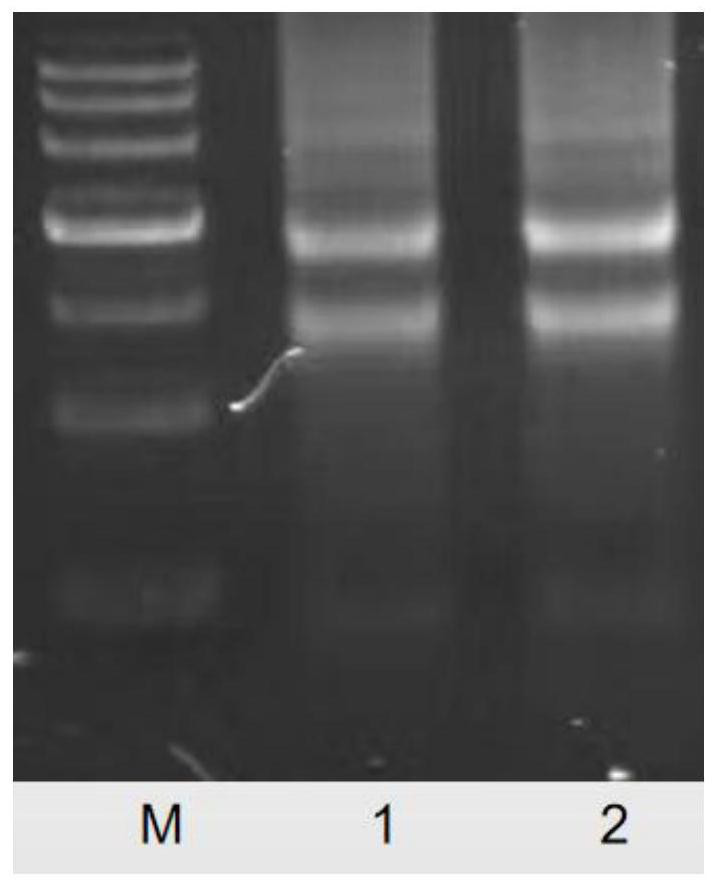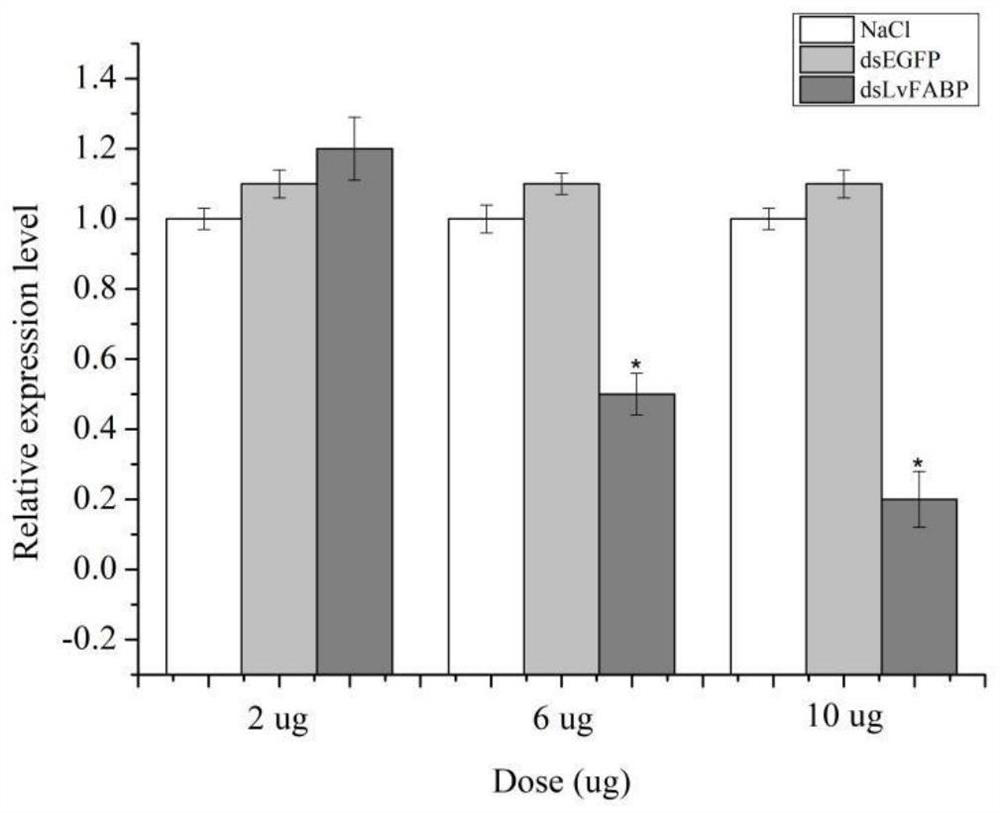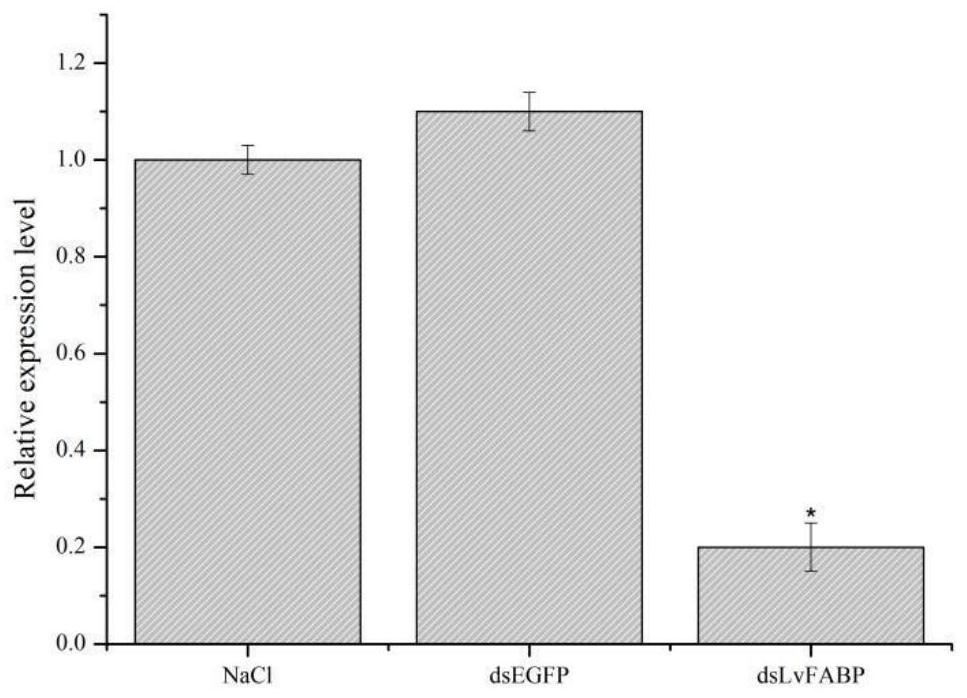Binding protein of pathogenic vibrio PirB protein and application thereof
A technology of pathogenic Vibrio and protein binding, applied in the field of genetic engineering, can solve the problems of intractable diseases in aquaculture, the existence of drug residues, and the destruction of the micro-ecological balance of aquatic animals, so as to reduce the mortality rate of prawns and have a good application prospect Effect
- Summary
- Abstract
- Description
- Claims
- Application Information
AI Technical Summary
Problems solved by technology
Method used
Image
Examples
Embodiment 1
[0029] VP AHPND Isolation and identification of candidate interacting protein LvFABP of toxin PirB
[0030] Vibrio parahaemolyticus (VP) infecting this species with acute hepatopancreatic necrosis AHPND ) of the toxin protein PirB as bait to screen the shrimp yeast library. The total RNA was extracted from the hepatopancreas, stomach and intestinal tissues of Penaeus vannamei, followed by mRNA purification and reverse transcription and cDNA synthesis and purification experiments, and then transferred to the pGADT7 vector to construct a yeast two-hybrid library, and the bait gene ( The cDNA clone of pirb) was constructed on the bait vector of yeast two-hybrid, and the self-activation and toxicity detection of the target gene were carried out during the screening of the yeast two-hybrid library; the bait plasmid and the library plasmid were transformed into yeast cells; yeast screening; screening positive results PCR Detecting gel images; screening positive results for all seq...
Embodiment 2
[0037] Example 2 Double-stranded RNA (dsLvFABP) synthesis experiment
[0038]According to the conserved domain of LvFABP gene obtained above, dsLvFABP with a length of about 300 bp was designed, and primers were designed to amplify it. The primers were dsLvFABP-F / R and dsEGFP-F / R. The primers used are shown in Table 1. Using TranscriptAid T7 High Yield (Thermo) transcription kit to synthesize dsRNA in vitro, the steps are as follows:
[0039] (a) dsLvFABP amplification: plasmids (LvFABP and EGFP) as templates. PCR system (50μL): 2×Taq PCRMasterMix (Tiangen) 25μl, Primer F 1ul, Primer R 1ul, DNA template 2ul, ddH 2 O 21ul; PCR reaction conditions: pre-denaturation at 95°C for 5min, denaturation at 95°C for 30s, annealing at 55°C for 30s, extension at 72°C for 1.5min, 30 cycles, incubation at 72°C for 10min, PCR products are recovered by gel for use.
[0040] (b) dsLvFABP transcription: using the purified PCR product as a template, the transcription system is 50 μl: 5×Transcri...
Embodiment 3
[0044] Example 3 Double-stranded RNA (dsLvFABP) interference experiment
[0045] (a) Optimal interference dose experiment of dsLvFABP:
[0046] Using the above-obtained double-stranded RNA (dsLvFABP) as the interfering agent, different interfering doses were set, and dsLvFABP was diluted with NaCl at different concentrations, and the final concentrations were 2 μg / 10 μl, 6 μg / 10 μl and 10 μg / 10 μl, respectively. The experimental group (different doses of dsLvFABP) and two control groups (NaCl group and EGFP group) were set up, with 3 biological replicates. It was injected from the side of the third muscle of the tail of Litopenaeus vannamei. After 48 hours of interference, 3 prawns in each group were used as a sampling unit, and their hepatopancreas, stomach and intestinal tract were respectively placed in 5ml cryopreservation tubes, and immediately placed in liquid Store in nitrogen. After sampling, transfer the samples to a -80°C refrigerator for long-term storage for subse...
PUM
 Login to View More
Login to View More Abstract
Description
Claims
Application Information
 Login to View More
Login to View More - R&D
- Intellectual Property
- Life Sciences
- Materials
- Tech Scout
- Unparalleled Data Quality
- Higher Quality Content
- 60% Fewer Hallucinations
Browse by: Latest US Patents, China's latest patents, Technical Efficacy Thesaurus, Application Domain, Technology Topic, Popular Technical Reports.
© 2025 PatSnap. All rights reserved.Legal|Privacy policy|Modern Slavery Act Transparency Statement|Sitemap|About US| Contact US: help@patsnap.com



